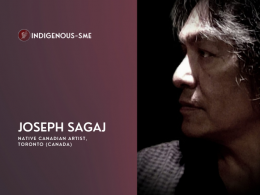If we could summarize in one word the essence of Indigenous cultural heritage, it would certainly be humane. With their zeal for life and everything that it encompasses and envelops, Indigenous nations of North America have shown the world that they’re living embodiment of a phoenix. The most fascinating features of their complex values are their resilience, courage, and mettle, which they have used to prevail over their opponents time and again. They exude motivation to do the greater good, fight for the greater good, and inspire the world with their conscientious standpoints in all matters. The world has and can undoubtedly learn a lot from the Indigenous inhabitants on how to coexist with robust morale which is sustainable enough to last a lifetime.
This is why the Indigenous SME Business Magazine has taken this opportunity to glorify and appreciate the very spirit of Indigenous compassion for all and dedicates this editorial piece to these powerful communities of Canada in the wake of National Indigenous History Month. We admire their ardour and perseverance to turn our society toward a positive and impartial change.
Quoting the famous Indigenous tribal elder Tatanka Iyotake, or as the world knew him by his illustrious title, the Sitting Bull, who’d said: “Let us put our minds together and see what life we can make for our children.” Sitting Bull was a highly respected leader and holy man of the Lakota Sioux tribe. He played a significant role in the resistance against the encroachment of Native American lands by European settlers and the US government during the late 19th century. Sitting Bull’s leadership and spiritual guidance made him a prominent figure in the struggle for Indigenous rights and sovereignty.
The Indigenous tribes of North America have persisted through incalculable adversity. Their profound wisdom and illustrious history are an asset to humanity. Let us remember their sacrifices, celebrate their fortitude, and join together to improve the world for the next generation.
A Quick Overview
It is common knowledge that June is National Indigenous History Month, which serves as a significant recognition of the diverse history, cultural heritage, and priceless contributions made by Canada’s First Nations, Inuit, and Métis Peoples. This month is an opportunity to recognize, honour, and educate ourselves about the languages, customs, and varied backgrounds that contribute to the rich fabric of Indigenous communities. Let us embark on this captivating journey as we delve into the significance of National Indigenous History Month and the vital stories that highlight its importance.
Rediscovering the Shared Legacy
The essence of National Indigenous History Month is the acknowledgement of the deep-rooted ties that Indigenous peoples have with their ancestral lands, waters, and snow. Parks Canada is responsible for protecting national heritage sites and is committed to preserving the histories, cultures, and current contributions of Indigenous communities. The Historic Sites and Monuments Board of Canada plays a crucial role in recognizing the significance of national historic events, including the Residential School System. This acknowledgement is important as it helps us understand and learn from past injustices, fostering a greater appreciation of our shared legacy.
Commemorating Fortitude and Tenacity
The Residential School System, a dark chapter in Canadian history, spanned several centuries until its closure in the late 1990s. It was a tool of assimilation aimed at eroding the vibrant cultures and identities of Indigenous peoples. Recognizing the profound impact of this system, its designation as a national historic event in September 2020 underscores the commitment to acknowledging and addressing the historical wrongs inflicted on Indigenous communities. National Indigenous History Month offers an opportunity for reflection, remembrance, and support for survivors and their families.
Honouring Indigenous Leaders and Innovators
Within the fabric of Indigenous history, countless individuals have left indelible marks of leadership and advocacy. Among them, Onondeyoh (Frederick Ogilvie Loft) and Peter Pitseolak stand as national historic figures. Onondeyoh, a First Nations political leader, emerged as a staunch advocate for Indigenous rights in the aftermath of World War I. Meanwhile, Peter Pitseolak, an astute Inuit observer and photographer, documented both the traditional customs and the transformative changes occurring within his community. These trailblazers represent the spirit of resilience and the ongoing contributions Indigenous peoples make to Canada’s cultural tapestry.
As National Indigenous History Month unfolds this June, Canadians are presented with a remarkable occasion to pay tribute and homage to the Indigenous communities whilst learning about the rich histories, vibrant cultures, and extraordinary contributions of First Nations, Inuit, and Métis Peoples. Beyond the month-long festivities, building stronger relationships and fostering greater understanding between Indigenous and non-Indigenous communities must be a year-round endeavour. Let us seize this opportunity to attend special events, engage in educational initiatives, and continue our collective journey toward reconciliation, respect, and unity. By doing so, we can forge a brighter and more inclusive future for all who call Canada home.

The Indigenous SME Business Magazine is an essential resource for those who are interested in the indigenous-owned business industry. The magazine offers valuable insights into the latest industry trends and developments through its insightful articles and up-to-date news. The platform is designed to provide comprehensive information about the challenges and opportunities in the Indigenous business sector, keeping Indigenous communities and others well-informed. It is an effective tool that ensures that users have access to the latest updates and insights. Feel free to follow our Twitter handle @IndigenousSme for real-time updates and news.







